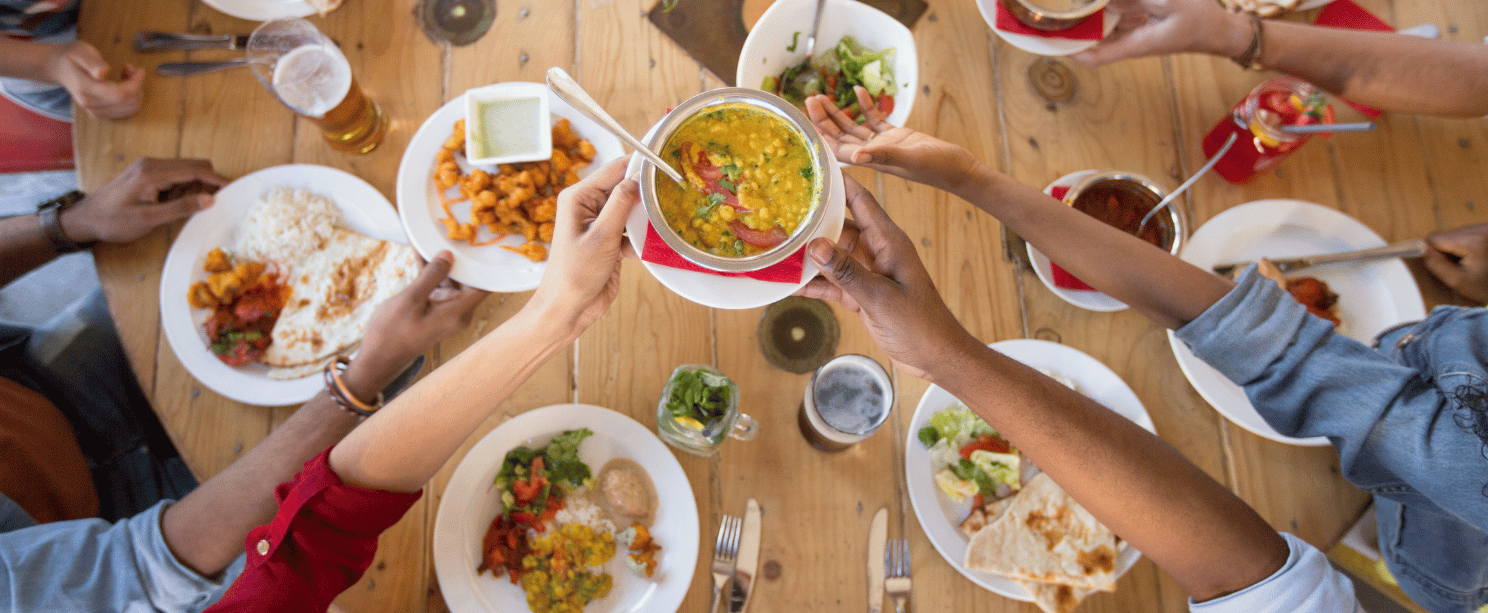
If you have diabetes, you know how difficult it can be to manage your diet and control your blood sugar levels. Certain foods and drinks can cause significant spikes while others can help with blood sugar management, but many people go through years of trial and error before they find out what works for them. However, while a healthy diet is essential, people with diabetes may have more flexibility than they think. Luckily, thanks to ongoing research, we now know the effect on blood sugar that different foods have. To help build a diabetes diet that optimizes blood sugar regulation, consider the 10 best foods to control diabetes and lower blood sugar.
Healthy Foods for Better Blood Sugar Regulation
The foods you eat matter, regardless of whether you have diabetes. However, people with diabetes benefit evermore from making conscious decisions about their meals. To help manage blood sugar levels in people with type 1 or type 2 diabetes, consider incorporating the foods below.
1. Non-Starchy Vegetables
Non-starchy vegetables are one of the healthiest foods you can eat when living with diabetes. Not only will they fill you up, but they’re full of essential vitamins and minerals that help regulate your blood sugar. Plus, they're considered one of many low GI foods, as they have trace amounts of sugar and plenty of fiber to help keep blood sugar stable.
Regardless of whether you have prediabetes or diabetes, you can eat as many non-starchy vegetables as you want without worrying about high blood sugar spikes. To get the most out of these beneficial foods, try to choose fresh, canned, or frozen vegetables that have no added sugar or salt. Some examples of non-starchy vegetables include the following:
- Artichokes
- Asparagus
- Avocados
- Broccoli
- Cabbage
- Cauliflower
- Celery
- Cucumbers
- Green Beans
- Hearts of Palm
- Mushrooms
- Olives
- Onions
- Squashes
- Tomatoes
- Zucchini
For a comprehensive list of non-starchy vegetables to help stabilize blood sugar levels in people with diabetes, check out this list from the American Diabetes Association.
2. Leafy Greens
While many of the foods to eat from this category are also considered non-starchy vegetables, leafy greens deserve their own honorable mention. Leafy greens are packed full of nutrients and are lower in digestible carbs than other vegetables. Not only can leafy greens help lower blood sugar levels, but they help you keep your blood sugar stable regardless of how much you eat.
Some of the best leafy greens to incorporate into your daily diet are spinach and kale, as they have very high levels of vitamin C. Vitamin C can help individuals manage type 2 diabetes mellitus and can help promote an overall sense of well-being. Leafy greens also contain specific antioxidants that help to protect your eyes from complications, which is especially important for people with diabetes.
So, if you're looking for creative ways to achieve a reduction in blood sugar levels, consider incorporating recipes with leafy greens.
3. Fatty Fish
Even if you don't have diabetes, one of the best foods to help keep you healthy is fatty fish. In addition to a lower risk of diabetes, fatty fish have a range of benefits and can help you manage your blood sugar. Fatty fish like salmon and anchovies give you a significant serving of the omega-3 fatty acids DHA and EPA, which can help protect your heart against potential complications from diabetes. DHA and EPA also protect your blood vessels, reduce inflammation, and improve the function of your arteries after consumption.
Since your risk of heart disease and stroke is almost doubled if you have diabetes, incorporating fatty fish into a balanced diet can reduce your chances of serious complications. Plus, fatty fish is an excellent source of protein that will help you feel full and manage your weight with ease.
4. Nuts and Eggs
Other fatty foods that help manage diabetes and blood sugar fluctuations are nuts and eggs. Nuts have high levels of fiber, and most are low in digestible carbs, meaning they won’t raise your blood sugar. The best nuts for diabetics include almonds, brazil nuts, cashews, hazelnuts, macadamia nuts, pecans, pistachios, and walnuts. If you’re watching your weight, eat nuts in moderation, as they are still high in fat. Even though they're healthy fats, it’s still fat and shouldn’t be overdone.
Eggs are also a great source of healthy fats that can have a positive impact on blood sugar levels. In fact, eggs can improve your insulin sensitivity and decrease inflammation while providing antioxidant benefits that help reduce the amount of free radicals in your body and protect against disease. If you incorporate eggs in your diet, make sure that you include the yolk, as that’s where most of the nutrients that help with blood sugar are located.
5. Seeds
Certain types of seeds are known to help people with type 2 diabetes manage their blood sugar levels. The two best seeds to eat as a diabetic are chia seeds and flax seeds. Chia seeds are packed with fiber, low in digestible carbs, and have been found to lower your blood sugar levels.
Flaxseeds are also beneficial as they can help improve blood sugar control and decrease your risk of heart disease and stroke. Since flaxseeds can be difficult to absorb, opt for ground seeds or take the time to grind them up at home before eating them. Ingesting whole flax seeds won’t give you the same benefits.
6. Natural Fats
Extra-virgin olive oil has always been known to have many health benefits. It is one of the most effective oils at reducing the risk of heart disease and contains several antioxidants that help to reduce inflammation, protect your cells, and decrease high blood pressure and high cholesterol. Choose pure extra-virgin olive oil to get all of the health benefits and sprinkle it on salads, use it in a marinade, or cook meats and vegetables with it.
Other natural fats that are helpful in controlling diabetes include coconut oil, avocado oil, nut oil, lard, tallow, chicken fat, duck fat, coconut milk, and unsweetened coconut cream.
7. Apple Cider Vinegar
Apple cider vinegar is popular amongst health food fanatics for a good reason. The fermented acetic acid helps to improve insulin sensitivity, decrease fasting blood sugar levels, and reduce blood sugar response when paired with meals that are rich in carbs. Due to the high acidity of apple cider vinegar, it’s best to take it mixed with water to avoid damaging your teeth and esophagus. Start slowly, with about one teaspoon, and work your way up to one to two tablespoons.
8. Cinnamon and Turmeric
Spices are powerful tools, especially when it comes to controlling diabetes. Both cinnamon and turmeric should be incorporated into your diet daily to get the best results and doing so is easy with a few simple steps.
Cinnamon can be added to almost any food or drink to increase the flavor and add a little kick. Cinnamon has been shown to help improve your blood sugar levels and insulin sensitivity while reducing A1C levels.
Turmeric also lowers inflammation, helps regulate blood sugar levels, reduces your risk of developing heart disease, and benefits kidney health. Just make sure that you mix your turmeric with black pepper to activate the beneficial ingredient, curcumin.
9. Probiotic Packed Dairy Foods
If you add dairy to your diet, make sure it’s packed with healthy probiotics for the biggest benefits to your health. Greek yogurt is a great option since it’s low in sugar and high in probiotics. Greek yogurt has been found to improve blood sugar control and even reduce heart disease risks. Aim for unflavored Greek yogurt, as the flavored versions are much higher in sugar and more processed, which may lead to high blood pressure and high blood sugar levels.
10. Strawberries
If you want something sweet, try snacking on a cup of strawberries. Strawberries are loaded with antioxidants and have been shown to reduce both cholesterol and insulin levels after a meal. If you’re not a fan of strawberries and want to incorporate daily fresh fruit into your diet, opt for raspberries, blueberries, or blackberries, which tend to have lower sugar content than other fruits like apples and bananas.
Manage Your Blood Pressure and Help Prevent Diabetes-Related Complications
To get the most out of your food, adopt a diabetes meal plan. Planning and preparing meals ahead of time will reduce the likelihood of snacking or unhealthy eating and will help you save time and energy throughout the week.
Diabetes doesn’t mean that you can’t eat your favorite foods, but you do need to monitor your blood glucose levels to stay safe. By incorporating these 10 foods into your daily diet, you’ll give your body the nourishment it needs so you can indulge a little every now and then. If you need blood glucose meters or continuous glucose monitoring devices, Byram Healthcare has you covered. We’re proud to provide you with the latest technology in diabetes management, including continuous glucose monitoring. For more information and support on diabetes management, sign up for Byram Healthcare’s Caring Touch At Home™ Program. The Caring Touch At Home™ Program combines convenience, affordability, and choice to deliver extensive service and support to people with diabetes.




